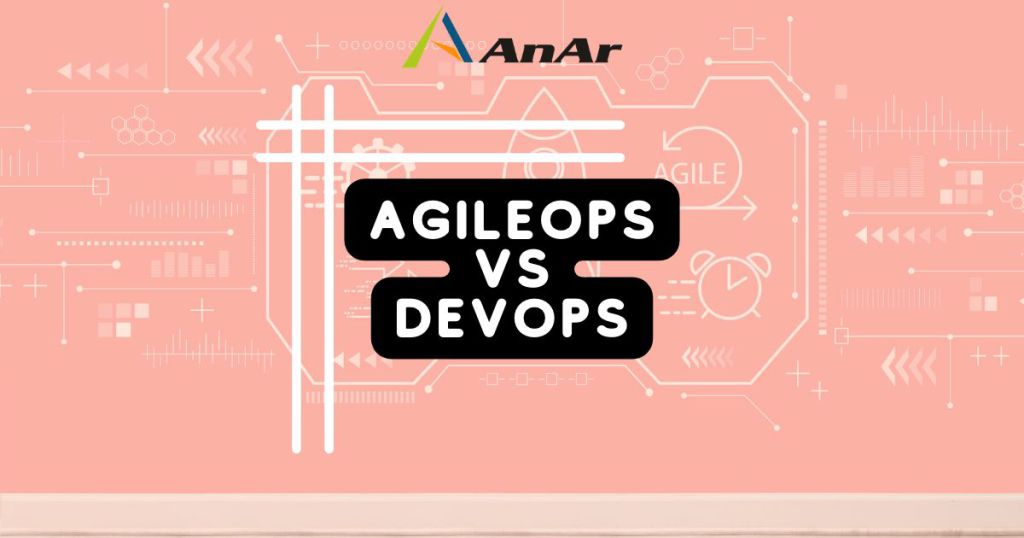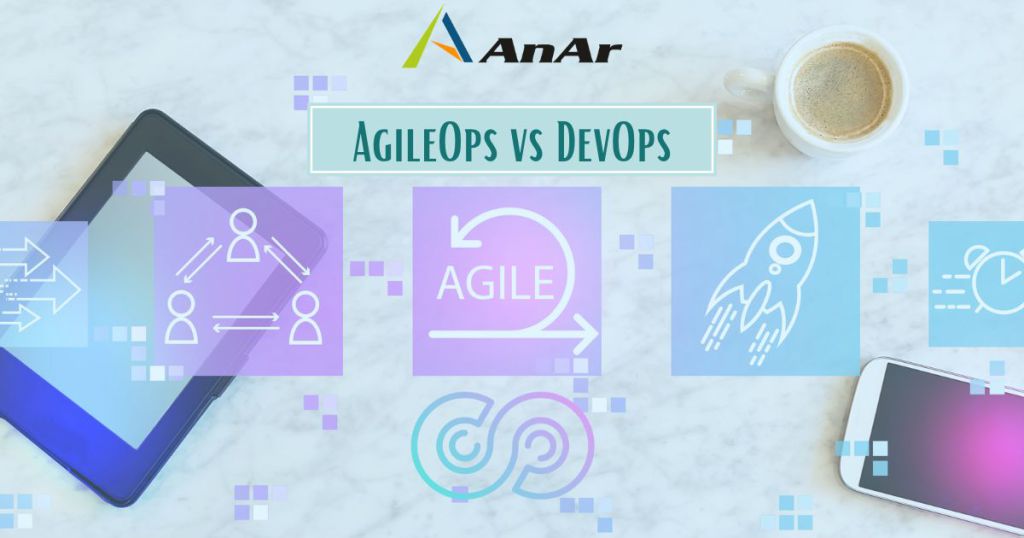The early 2000s saw the widespread adoption of the agile methodology, which changed how we create software and other goods.
But after a few years of being the norm, a crucial overlook emerged: the operations team’s methods and needs, which delivered and managed software products, were not included in the revolution.
This resulted in a new DevOps methodology that helps align operations and development teams.
There is a brand-new approach to operations these days called as AgileOps.
Agile operations, often known as AgileOps, is a digital operating paradigm for businesses looking to improve in a hybridized work environment. It mixes Agile methodology with DevOps practices.
Before we delve into AgileOps, let’s briefly understand Agile and DevOps.
So, what is Agile?
Agile is an iterative method of software development and project management that emphasizes teamwork, client input, and quick releases. Much planning and design are done in advance, but agile development moves forward in achievable steps and involves tight stakeholder collaboration.
Numerous advantages result from this, the most significant of which is probably the ability to immediately fix software that doesn’t match the demands or expectations of the user.
What is DevOps?
DevOps is a method for developing software that empowers teams to use agile concepts and techniques to build, test, and deliver software more quickly and reliably.
The aim is to bridge the gap between operations, who manage the software in production, and developers, who create application software. Further, to design and manage the supporting infrastructure.
The outdated method of building applications by development teams and handing them off to an operations team to deploy and manage the software with little knowledge of how it was created has been replaced by DevOps.
Now that we have briefly recalled Agile and DevOps. Let’s understand AgileOps and how it differs from DevOps.
What is AgileOps?
AgileOps, simply put, is the extension of Agile concepts into IT operations – making it an essential part of a DevOps transformation. In other words, Agile methods and principles are integrated into operations, making for a more efficient workflow. Combining Agile and DevOps makes perfect sense because they offer reliable methods for managing uncertainty and shifting needs in software development. Consequently, this close connection between AgileOps and DevOps benefits any company looking to streamline its software development process!
Although they share many similarities, Agile and AgileOps are not the same. AgileOps was created in response to the increasing popularity of agile development methods. While many of the same concepts are utilized in both, AgileOps applies them to the entire organization rather than just the software development team.
The following phases are typical of an AgileOps framework:
- Conceptualization — New initiatives are found and given top priority by the development team and its stakeholders.
- Inception — As the team grows and develops, the project takes shape, and stakeholders set requirements, budgets, and schedules. With each new team member, the project becomes more refined and focused, helping to bring the initial vision to life.
- Iteration — The software development team begins work on the project, adhering to the provided specifications. This initial stage is known as the “iteration” period, during which the team will work to create a functional product.
- Release — After QA testing, the company makes the version available to users in production.
- Production — Regular maintenance and operational support begin after the software is deployed.
- Retirement — The organization officially retires the application, or certain features, from production.
What are the foundational principles of AgileOps?
The fundamental foundational principles of AgileOps are:
- AgileOps has been designed to help companies deliver high-quality software products to their customers quickly, efficiently, and with the high level of quality that customers expect.
- Using an iterative, incremental approach to development means that business analysts, software developers, and quality assurance engineers work closely together on the same goals and use the same tools to deliver the products.
- AgileOps gives businesses the flexibility and adaptability they need to respond quickly to changes in their business environment.
- AgileOps provides rapid feedback loops that incorporate customer collaboration at every stage of the development process. This means that customers are involved in the product development process, allowing them to provide valuable input and feedback for the final product.
- AgileOps uses continuous improvement to drive quality higher and higher throughout the development process.
What is the importance of AgileOps?
AgileOps is a methodology that can be used to streamline and improve the efficiency of an organization’s operations. AgileOps utilizes tools such as an Agile framework, software delivery automation, continuous delivery, and DevOps to transform business processes through automation.
AgileOps is highly compatible with other leading frameworks, such as Scrum and Kanban, making it easy to implement in new and existing organizations. AgileOps is a powerful development method that has been proven to yield great results in a remarkably short period of time.
Although operations teams have been keeping an eye on IT infrastructure and applications since the dawn of digital technology, today’s complicated web of operations needs quick traversal to keep an eye on performance. This includes settings where cloud, as-a-service, containerized, or virtualized solutions, as well as the internet of things (IoT) and AI, coexist with mainframes and other legacy systems.
You can control the inherent chaos of software development and delivery with the help of AgileOps. Programmers can boost productivity and reduce waste by providing structure to the process. Additionally, it enables you to adjust to change quickly and effectively, ensuring that your team is consistently focused on the most critical projects.
AgileOps: How does it work?
AgileOps is based on continuous integration, service evaluation, and delivery. It aims to promote teamwork and usher in a culture shift from prior, more isolated practices, just as Agile methodology and DevOps.
It is a project management and development process that develops solutions through collaboration and partnership between self-organizing cross-functional teams.
Before we understand how AgileOps works, we should take a look at the core elements of AgileOps below:
The Elements
- The Agile Manifesto — These are the central principles of Agile development.
- The Kanban Board Method — Teams, may better visualize their work and streamline their process thanks to this.
- DevOps — To guarantee the timely deployment of high-quality software, this encourages collaboration between the development and operations teams.
- Lean Software Development — This ideology aims to remove waste from the software development process.
- The Theory of Constraints — Teams can use this to locate and manage process bottlenecks.
The Process
Before moving further, consider which Agile project management style is best for your IT team. DevOps teams frequently use Kanban because it makes it simple to visualize tasks and monitor progress on a project board. Scrum, however, divides the project into manageable sprint periods, making it the preferable choice for larger teams working on longer-term objectives.
The next step is to evaluate the responsibilities and best practices specified in the Agile approach you’ve chosen. It’s possible that the Scrum master or product owner roles won’t work with your current IT team structure. Similarly, your IT staff members might not know about Agile best practices or how an Agile team functions. Please spend some time educating your IT employees and responding to their queries. Select the best candidates to take on new leadership roles inside an Agile structure.
Finally, you must provide your IT personnel with the proper project management tools. They may need help to use their current systems in conjunction with the adaptability of an Agile operations model; therefore, they will want access to a comprehensive software solution to manage IT requests, track development, and communicate outcomes to stakeholders.
AgileOps vs. DevOps
The Overview
It makes sense to compare AgileOps and DevOps because they both sprang out of Agile methodology and concepts, especially given that some of their differences might not always be obvious.
For instance, in the domains of delivery and operations, Agile may already be the foundation of an organization’s DevOps methods. DevOps may be the culture component supporting Agile development and operations at other firms.
AgileOps will seem familiar to the IT team if DevOps is the backbone of a software delivery team’s agility. Still, enterprises should be ready for a philosophical debate regarding DevOps vs. AgileOps.
The Differences
The AgileOps framework contains several finer aspects that the DevOps industry might benefit from, particularly the conception and iteration phases, which aren’t given as much attention in DevOps models.
Another area where AgileOps and DevOps diverge is in how they see project management. The project management standards for AgileOps are the Kanban framework and accompanying technologies. Still, DevOps needs to be more prescriptive about which project management approaches should be used in a continuous Integration & continuous delivery pipeline. Project management in a DevOps context is supported by stakeholders having access to an unprecedented amount of back-end data thanks to the current generation of DevOps tools and platforms.
DevOps and AgileOps place equal emphasis on effective communication and teamwork. Although there hasn’t been much discussion of DevOps documentation, the emergence of automated tools like Hugo and DocToolchain offers a chance to combine DevOps’ emphasis on automation and collaboration with AgileOps’ communication sensibilities, which will ultimately be advantageous to DevOps teams and their stakeholders.
The ability of teams to manage mid-project adjustments is where AgileOps and DevOps differ most significantly. Although the DevOps methodology can adapt to these changes, more experienced DevOps businesses appear to be better prepared to do so.
What are the benefits of AgileOps?
Agile methods can significantly enhance the efficiency of an IT team. Here are a few examples:
- Enhanced Team Integration — Software developers and IT specialists work together more frequently due to AgileOps. In the past, these two teams often operated in isolation from one another and did not communicate until a product was released. However, with an Agile operating model, there is more interaction between the two departments, which aids in coordinating corporate objectives and removing pointless ambiguity throughout the project life cycle.
- Fewer Errors — Agile teams tackle projects iteratively, regularly working to continuously develop, test, and improve products. Regular testing allows for the early detection and prompt correction of issues. IT teams can prevent retroactive issue repairs under strict time restrictions by reducing defects before the program is deployed on a big scale.
- Lower Expenses — Agile teams can significantly cut expenses by fixing problems and introducing new features after each iteration. Agile allows businesses to create the most excellent product before releasing it, preventing them from wasting money and other resources on an expensive redesign.
- Ad-hoc Teams— The ability to create ad hoc teams to address particular technical problems or work on novel projects is the main advantage AgileOps provides businesses that DevOps does not. Development management hierarchy must be minimized to tackle issues in a hybridized work environment.
- Setting Clear Priorities — The Agile operational paradigm emphasizes meeting business demand quickly. Although IT teams sometimes prioritize stability above speed, an Agile strategy can help them broaden their goals and gain a fresh perspective on satisfying a client base.
Challenges with AgileOps
- In comparison to conventional software development approaches, AgileOps is a relatively new approach to software development. Many changes must be made to implement AgileOps, and only some are always willing to change.
- To get the most out of AgileOps, it is crucial to test and evaluate your work outcomes regularly. Making sure everyone follows the same rules can be difficult because each team has its tools, processes, and procedures.
- Another difficulty is poor communication. Due to diversity, bringing everyone on the same page throughout the project might be challenging, given that AgileOps is all about collaboration and communication. Consequently, starting with a clear and straightforward communication plan is crucial.
- Lack of visibility is often a challenge with AileOps. This is because projects are frequently divided into smaller components, making it difficult to see the entire project’s development at once. Therefore, setting up precise measurements and reporting processes from the start is essential. Thanks to this, a comprehensive grasp of the project’s development and the ability to spot problem areas immediately will be made possible.
- Roles and duties that need to be defined pose a common problem for AgileOps—at the same time, team members may need clarification and support to determine the responsibilities. To avoid any surprises later, you must define clear roles and duties at the start of the project.
Wrapping-up
AgileOps is a potent methodology that may help organizations become more effective and change-responsive. Even while there are challenges with AgileOps, the advantages vastly exceed them. AgileOps methodology is worth considering if you want to increase your organization’s agility, even though it may not be appropriate for all enterprises.






